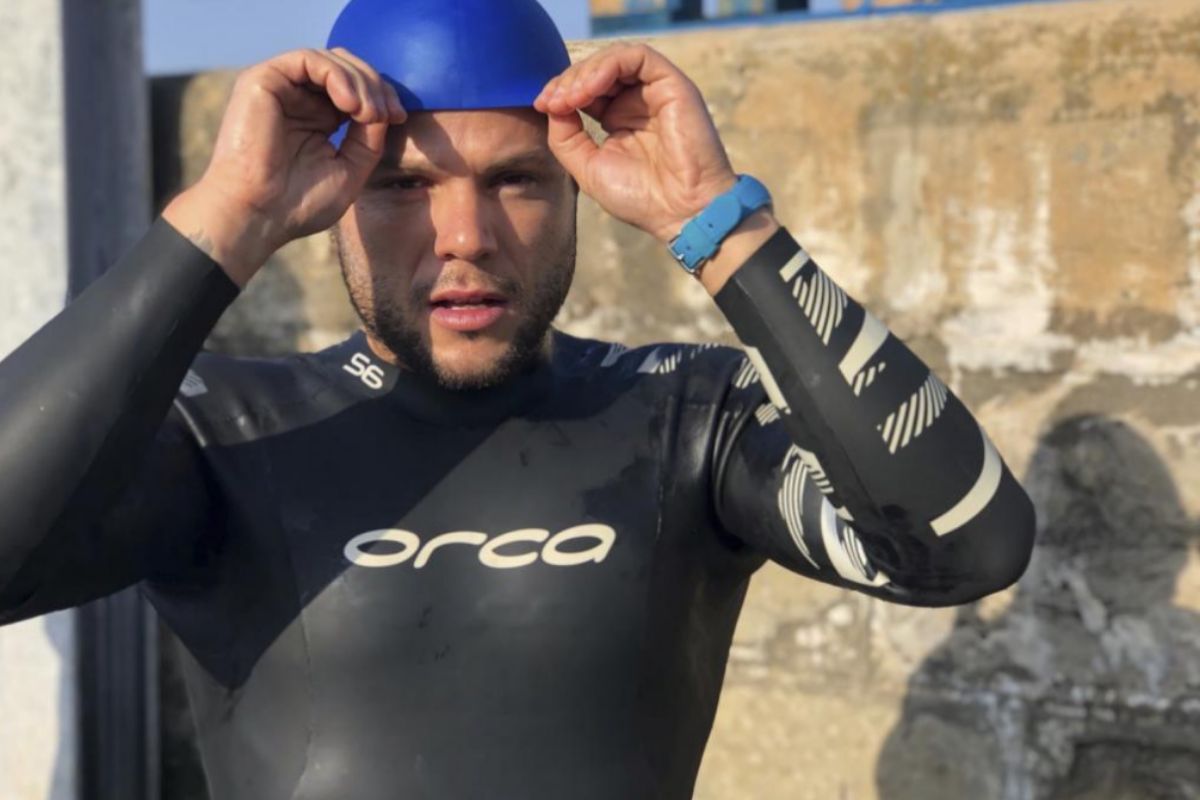- Carlos Duarte. "Investing in recovering the oceans is good business"
- Pollution: Ocean pollution reaches 10,000 meters depth
- Climate change. 10 challenges for the decade
- Climate change: when Earth looked like 'Waterworld'
For three years, Ignacio Dean (Málaga, 1980) traveled 33,000 kilometers on foot and alone. A journey that took you through cities, mountains, deserts and jungles of 31 countries to document first-hand the effects of climate change. And it was during his peculiar trip around the world when he saw a multitude of beaches full of plastic: «I had
an outstanding debt to the sea. I wanted to send a message about the importance of safeguarding the health of the ocean, "explains Dean, who decided to pay off by taking the pulse of the seas from within.
This is how he began to shape the Nemo Expedition in his head: an adventure that between June 2018 and March 2019 led him to dive into seas of the five continents. Five journeys in which he faced the cold (with temperatures of three degrees), currents, waves, sharks, crocodiles and poisonous jellyfish, and which he has narrated in The Call of the Ocean (Editorial Zenith) . With a foreword by Odile Rodríguez de la Fuente, the second book of this naturalist, popularizer and professional adventurer is published precisely in the week in which Environment Day is celebrated.
Dean argues that the oceans are the great unknown despite the fact that more than 70% of our planet is covered by them. Furthermore, he believes that it should be called Water instead of Earth.
But there was an obstacle to launching his new adventure: « He was not a swimmer. He was barely swimming four lengths in a pool but, more than a difficulty, this was a stimulus, "says Dean in a telephone conversation from Puerto de Vega, the Asturian town where the coronavirus crisis is happening with his partner and his girl, who she was born just a month ago and that naturally is called Mar.
"On the basis of perseverance and discipline" he became a swimmer capable of diving into the Strait of Gibraltar (between Europe and Africa); the Bering Strait (America-Asia), the Bismarck Sea (Asia-Oceania), the Gulf of Aqaba (Africa-Asia) and complete the Meis-Kas crossing (Europe-Asia). The naturalist thus achieved the challenge of swimming together the continents of the planet.
Throughout these five stages, carried out on different trips, he traveled a total of about 60 kilometers by swimming. During his one-year training, he covered 2,500 kilometers: «At first I trained in a pool near home to improve technique, depth and endurance. I had no coach, I bought books and tried to apply what I read, "he recalls.
When he was in good physical shape, he left to train in the Cantabrian Sea in the winter, first, and then, in the spring, to swim in Mediterranean waters. The naturalist was shocked that during those swimming along the coasts of Spain, he saw very few fish. "Coastal waters provide 90% of the wild fish we consume but are greatly affected by overfishing, tourism and urban and industrial discharges."
After his long training, the naturalist finds many similarities between swimming and life: «After all, the mystery of both consists in learning to flow and glide through difficulties , make efficient use of our time and resources , as from our stroke, to advance with the least possible effort. Sometimes, we will have the flat sea and the current in favor, but at others, it is time to swim against the current and with the rough waters ", compares Dean, who considers this activity" a great meditation exercise because it allows you to focus on the here and now, in the stroke ».
The hardest journey, he recalls, was in the Bismarck Sea, not just because it was the longest (about 20 kilometers). “It took us a long time to arrive and great logistics were required, but also, it was November 2018, the water was at 30 degrees and it was monsoon season, with rain and high humidity. In these waters there are saltwater crocodiles and irukandji jellyfish, which are small and very poisonous. They are usually a meter deep, so when I stopped to feed them, I would stay on my back, "recalls Dean, who admits that he almost gave up.
Fortunately, he had no mishap with any marine animal: " In Papua we went to record crocodiles and a specimen caught the drone and destroyed it ," he recalls. In fact, Dean warns of the fragile situation of many of these animals: «Shark populations are very threatened. Thousands of fish are caught to cut its fin. Invasive species are appearing in the Red Sea; In the Bering Strait, walruses, seals, and polar bears are moving north in search of cold and ice , and the Strait of Gibraltar, a migration route for marine mammals, has become a highway that every day passes by. hundreds of ships. "
In accordance with the criteria of The Trust Project
Know more- Science and health
- science
- Climate change
- Graphics
Environment War on single-use plastics: they cannot be sold from July 2021
By 2070, a third of the world's population will live in areas as hot as the Sahara
FutureHumanity at the precipice: "There is a one in six chance that we will become extinct in 100 years"

